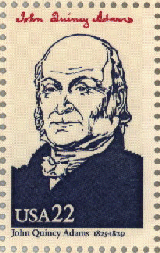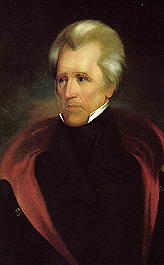Factionalism and Political Parties
Domestically, the presidency of Monroe (1817-1825) was termed the "era of good feelings." In one sense, this term disguised a period of vigorous factional and regional conflict; on the other hand, the phrase acknowledged the political triumph of the Republican Party over the Federalist Party, which collapsed as a national force.The decline of the Federalists brought disarray to the system of choosing presidents. At the time, state legislatures could nominate candidates. In 1824 Tennessee and Pennsylvania chose Andrew Jackson, with South Carolina Senator John C. Calhoun as his running mate. Kentucky selected Speaker of the House Henry Clay; Massachusetts, Secretary of State John Quincy Adams; and a congressional caucus, Treasury Secretary William Crawford.
Personality and sectional allegiance played important roles in determining the outcome of the election. Adams won the electoral votes from New England and most of New York; Clay won Kentucky, Ohio and Missouri; Jackson won the Southeast, Illinois, Indiana, the Carolinas, Pennsylvania, Maryland and New Jersey; and Crawford won Virginia, Georgia and Delaware. No candidate gained a majority in the Electoral College, so, according to the provisions of the Constitution, the election was thrown into the House of Representatives, where Clay was the most influential figure. He supported Adams, who gained the presidency.

Jackson -- Tennessee politician, Indian fighter and hero of the Battle of New Orleans during the War of 1812 -- drew his support from the small farmers of the West, and the workers, artisans and small merchants of the East, who sought to use their vote to resist the rising commercial and manufacturing interests associated with the Industrial Revolution.

